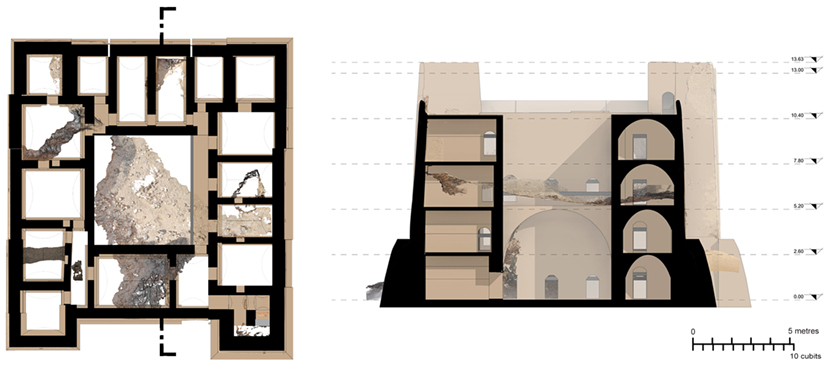
3D Parametric Modelling based on Point Cloud for the Interpretation of the Archaeological Remains
Abstract
In the archaeological realm, 3D survey has been gaining importance because it allows to accurately capture the relationship between the objects and their contexts, which is inevitably destroyed during an excavation. The ensuing 3D modelling allows a morphological/geometric analysis and an interpretation/classification of the architectonic proprieties (features typologies and styles). An interesting application is adopting parametric modelling to study the modular features and repetitive architectural elements and to define an interpretative geometrical model. This approach implies: (i) the identification of similar and recurring architectural features and (ii) their semantic classification, (iii) their modelling and fitting on the survey data and (iv) the parametric reconstruction of comparable missing parts. This approach appears to be particularly useful in the study of archaeological remains characterized by a modular construction technology, including both basic elements (such as bricks) and architectural elements (such as barrel vaults), as is the case of the late Roman Egyptian settlement that is the object of this study. All buildings are constructed of mudbricks and consist of different compositions of rooms covered by pitched-brick barrel vaults, and the mudbrick building technique suggests the use of modular measurements of walls, vaults and rooms. The reality-based parametric modelling may support the process of interpretation of the surveyed remains and of the reconstruction of those that are invisible, because hidden under the sand, or because no longer existing.
DOI: https://doi.org/10.20365/disegnarecon.26.2021.2
Keywords
Full Text:
PDFRefbacks
- There are currently no refbacks.
Copyright (c) 2021 Fausta Fiorillo, Corinna Rossi
DISEGNARECON
ISSN 1828 5961
Registration at L'Aquila Law Court no 3/15 on 29th June, 2015.
Indexed in SCOPUS. Diamond Open Access. All papers are subjected to double blind peer review process by qualified reviewers.
Journal founded by Roberto Mingucci
